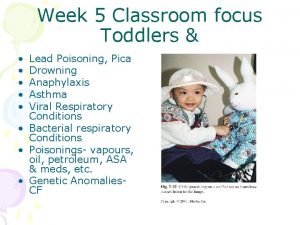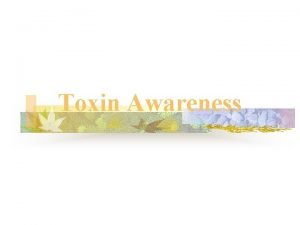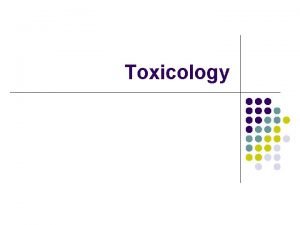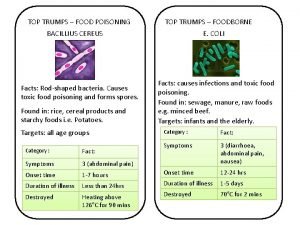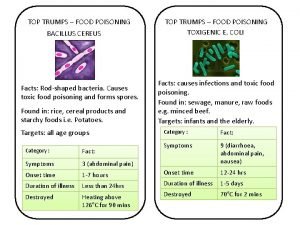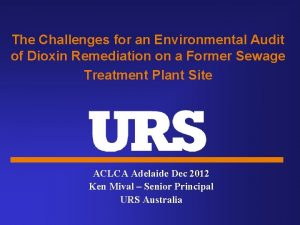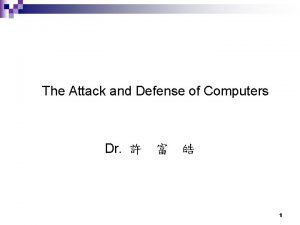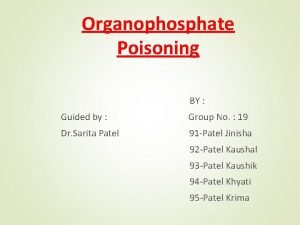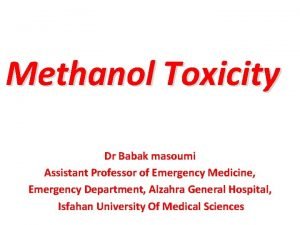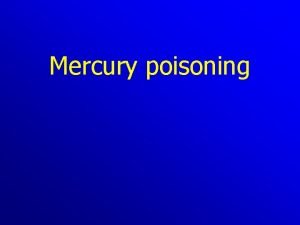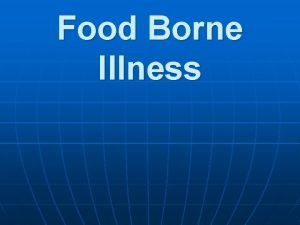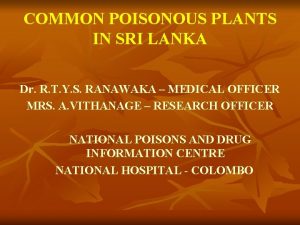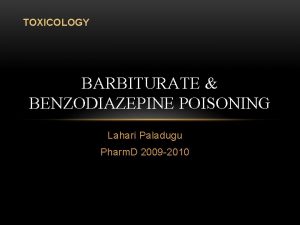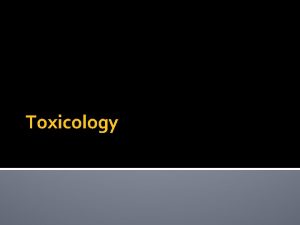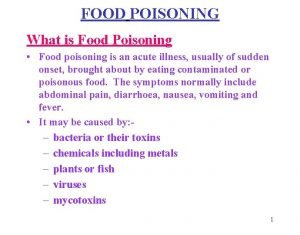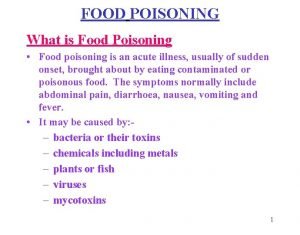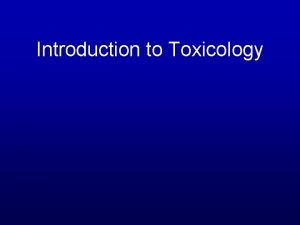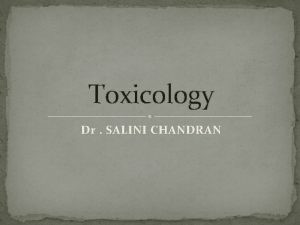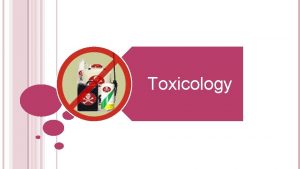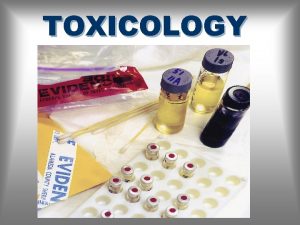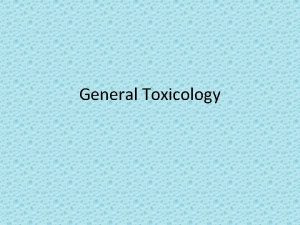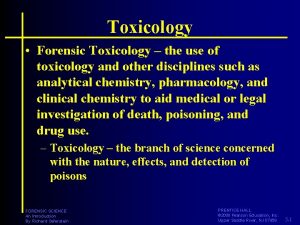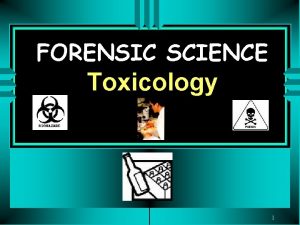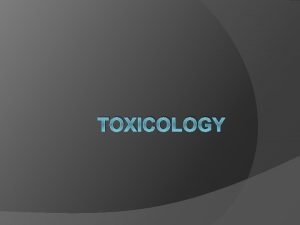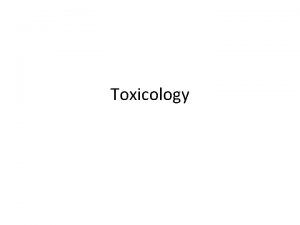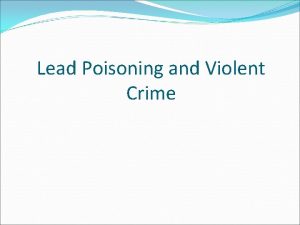Introduction to Toxicology l What is Toxicology Poisoning




















- Slides: 20

Introduction to Toxicology l

What is Toxicology? Poisoning and knowledge of poisons have long been known to humans But as a branch of science or distinct discipline ‘Toxicology’ is very young Even the cave dwellers had the knowledge of substances that can cause harm… ‘Socrates’ & ‘Cleopatra’ are two famous victims of poisoning in history

The Dose Makes the Poison • An apparently nontoxic chemical can be toxic at high doses • Too much of a good thing can be bad • Highly toxic chemicals can be life when given in appropriate saving doses • Poisons are not harmful at a sufficiently low dose

General considerations Definition: Toxicology is the science dealing with properties, actions, toxicity, fatal dose, detection of, interpretation of the result of toxicological analysis and treatment of poisons In other words- “It is the study of the adverse physicochemical effects of chemical, physical or biological agents on living organisms and the ecosystem, including the prevention and amelioration of such adverse effects”

General considerations Forensic Toxicology is the study of the chemical and physical properties of toxic substances and their physiological effect on living organisms Forensic toxicology deals with the medico-legal aspects of the harmful effects of chemicals on human beings Clinical toxicology deals with diagnosis and treatment of human poisoning

General considerations Poison is a substance (solid, liquid or gas), which if introduced in the living body, or brought into contact with any part thereof, will produce ill health or death, by its constitutional or local effects or both

General considerations Toxinology refers to toxins produced by living organisms which are dangerous to man viz. , poisonous plants, snake venoms, spiders etc. Orfila is regarded as the father of modern toxicology because of historical contrib to this subject

Medico-Legal Aspects of Poisons Administration of any substances with the intention of causing injury or death and which cause injury or death as a result, is legally sufficient for awarding punishment similar to homicide or attempted murder

Ideal Homicidal Poison: Should be cheap and easily available Should be colorless, odorless and tasteless Capable of being administered with food materials without being detected Should be highly toxic and capable of sure shot death Signs & symptoms should resemble a natural disease Least Postmortem changes and not to be detected by any chemical tests e. g. Fluorine and Thallium, but commonly used are Arsenic and Aconite

Ideal Suicidal Poison: Should be cheap and easily available Should be tasteless or be of pleasant taste Capable of being administered with food materials Should be highly toxic and capable of sure shot death Should be capable of producing painless death e. g. Opium and Barbiturates, but commonly used are Organophosphorus compounds and Endrin

Stupefying Poisons: Dathura, Cannabis indica, Chloral Hydrate. Abortificient Poisons: Calotropis, Oleanders, Aconite, Croton, Semecarpus, Cantharides, Ergot, Lead, Arsenic, Mercury, and Potassium permanganate. Cattle Poisons: Abrus precatorius, Oleanders, Calotropis, Organophosphorus, Arsenic, Aconite, Strychnine, etc. Arrow Poisons: Abrus, Croton, Aconite, Strychnine, Curare and Snake venom etc.

CLASSIFICATION OF POISONS CORROSIVES: Strong Acids: Mineral / Organic Acids: Sulphuric acid, Hydrochloric acid & Nitric acid Organic Acids: Carbolic acid, Oxalic acid, Acetic acid, etc. Strong Alkalis: Hydrates and Carbonates of Na, K, NH 4 Metallic Salts: Zn. Cl 2, Fe. Cl 2, Cu. SO 4, Ag. NO 3, KCN, etc.

IRRITANT S: Agricultural Inorganic: Non-metallic: P , I, Cl, Br, CCl 4 Metallic: As, An, Cu, Pb, Hg, Ag, Zn, etc. Mechanical: Powdered glass, Diamond dust, Hair etc. Organic: Vegetable: Abrus precatorius, Castor, Croton, Calotropis, etc. Animal: Snake and insect venom, Cantharides, Ptomaine

SYSTEMIC POISONS: 1. Cerebral Poisons: CNS Depressants: Ø Alcohol, CNS Stimulants: Amphetamine, Caffeine Ø GA Ø Opioid analgesics, Hypnotics and Sedatives. Ø Cyclic Antidepressants, . Deliriant poisons: Dhatura, Belladonna, Hyoscyamus, Cannabis, Cocaine, etc.

2. Spinal Poisons: Nux vomica and Gelsemium 3. Peripheral poisons: Conium and Curare 4. Cardiovascular: Aconite, Quinine, Oleander, Tobacco, HCN. 5. Asphyxiants: CO, CO 2, H 2 S

Routes of Poison Administration: Inhalation: Benzene, Xylene, Acetone, Methyl Chloroform, CCl 4, CO, H 2 S, Methane, Lead, Mercury, Asbestos, etc. Injection into blood vessels Intradermal, Subcutaneous, Intramuscular Inj. Application into serous membrane Introduction into Stomach Introduction into natural orifices Rubbing into skin: Organic phosphates, Nicotine, Phenol, Mercury, and Hydro cyanic acid

Factors Modifying Poison Actions: Quantity: • Higher the quantity, more severe action Form of the Poisonous substance: • Poison acts most rapidly in gaseous form and least in liquid form • When the combination of chemicals is more soluble, then more is the action • Alteration of action or efficacy when mixed with inert substances Mode of Administration

Factors Modifying Poison Actions: Conditions of the body: Age factor: Poisons have greater effects at two extremes of age Idiosyncrasy: Which is inherent personal hypersensitivity Habit: Effect of certain poisons decreases with habituation. It results from a decreased reaction between the chemical and the biological effectors

Factors Modifying Poison Actions: State of Health: A healthy person tolerates better than a diseased one Sleep and Intoxication: Action of some poisons get delayed if a person goes to sleep Cumulative Action: Those poisons which are slowly eliminated from the body, may gradually accumulate and then may produce poisonous symptoms

Types of Poisoning: Ø Acute Poisoning Ø Chronic Poisoning Ø Sub-acute Poisoning Ø Fulminant Poisoning
 Lead poisoning pica
Lead poisoning pica Dioxin poisoning
Dioxin poisoning Dioxin poison
Dioxin poison Top trumps food
Top trumps food B. cereus food poisoning
B. cereus food poisoning Dioxin poisoning
Dioxin poisoning Seo poisoning wikipedia
Seo poisoning wikipedia Satirical argument examples
Satirical argument examples Organophosphate toxicity
Organophosphate toxicity Methanol poisoning
Methanol poisoning Mercury poisoning symptoms
Mercury poisoning symptoms Whats lead poisoning
Whats lead poisoning Kode icd 10 keracunan baygon
Kode icd 10 keracunan baygon Oxygen therapy
Oxygen therapy Food poisoning onset
Food poisoning onset Diya kaduru seeds
Diya kaduru seeds Prinso poisoning
Prinso poisoning Chapter 17:8 providing first aid for cold exposure
Chapter 17:8 providing first aid for cold exposure Bgp poisoning
Bgp poisoning Arp cache poisoning attack fix
Arp cache poisoning attack fix Lahari paladugu
Lahari paladugu
